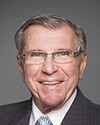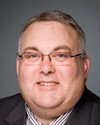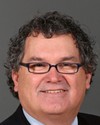No, you are flagging a very interesting issue. What Quebec's referendum provides for is that once the referendum question has been passed by the members of the Assembly, members of the Assembly are invited to join either the yes side or the no side. What happened, of course, was that all the members of the Liberal Party went on one side, and all the members of the Parti Québécois went on the other side. There were a few third parties, which were not very numerous at the time.
What happens under this model if parties have no opinion on the merits of the question? What will members do? Indeed, the Quebec legislation foresaw this problem. It said that if no member of the Assembly joins a side, then the Chief Electoral Officer is instructed to find people to staff the national committee.
Indeed, this model, this umbrella committee, as provided by the Quebec legislation, is different from the umbrella committees of the British type, which were more flexible. This system has been devised on the assumption that politicians would have a definite opinion on either side, and that parties would join a side en masse.
What happened in 1992, I remember, is that Monsieur Parizeau headed the no committee on the Charlottetown accord. But Mr. Libman, who was the leader of the Equality Party, was also opposed to the Charlottetown accord. I understand that he had to campaign under the umbrella of Monsieur Parizeau. This apparently worked. Apparently, they found a modus vivendi. Of course, it was a union, an illustration that politics makes strange bedfellows. But it worked. To my knowledge, Mr. Libman did not complain of being shut out. Indeed, Monsieur Parizeau had every interest in broadening the appeal of the no side, whatever the inner motives of those who voted no might have been.
Have I answered your question?




